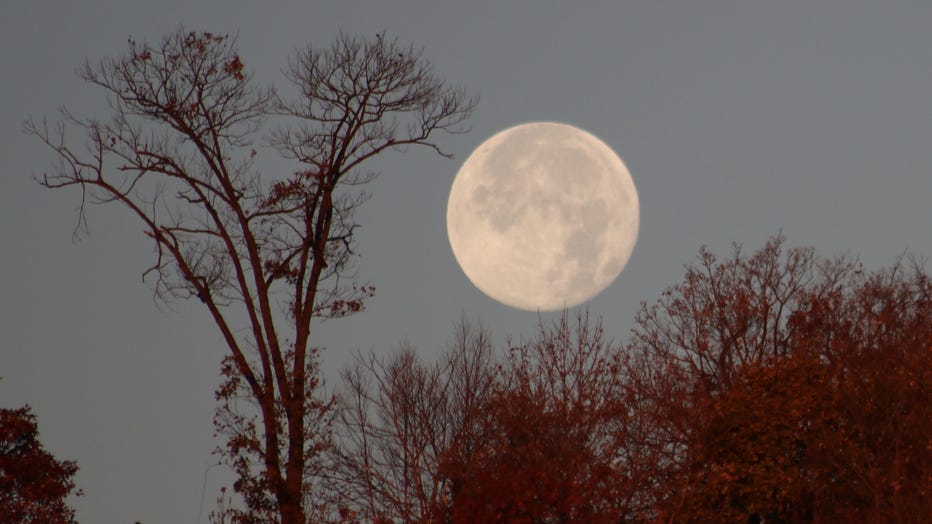Beaver Moon: How and when to see November's full Moon
Published November 25, 2023 2:48PM
Each full moon of the year has its own nickname. (Credit: FOX Weather)

Skygazers rejoice! NASA said the Moon will appear full for three days, from Saturday night to Tuesday morning, but it will only appear at its brightest for a brief period of time.
Peak illumination of November’s full Moon, known as the Beaver Moon, will occur early Monday morning, Nov. 27 at 4:16 a.m. ET.
During a full Moon, the Moon is positioned opposite of the Sun, placing the Earth between the star and our lunar satellite. Because of this position, the side of the Moon facing the Earth becomes fully illuminated by sunlight.
How to see the Beaver MoonBeaver Moon sets at the town of Edgewater, New Jersey, United States on November 20, 2021. (Photo by Islam Dogru/Anadolu Agency via Getty Images)
This brightness will allow skygazers to see the Beaver Moon with the naked eye. If this is how you’ll be viewing the full Moon, NASA recommends giving your eyes plenty of time to adjust. Depending on your eyesight, you will be able to see large impact craters on the moon.
For a closer look at the Moon, consider using a pair of binoculars with at least a magnification of 7. According to NASA, binoculars will allow you to see large mountain ridges and the rich texture of the Moon’s surface.
A telescope can provide an even closer look. NASA said the instrument will help you see crater chains, in addition to larger craters, along with cracks on the Moon’s surface that formed when lava that once filled a basin cooled and contracted.
HOW THE TELESCOPE BECAME OUR WINDOW INTO THE UNIVERSE
To see the many features of the Moon, NASA recommends viewing the lunar body during its other phases, as well.
A Beaver Moon by any other nameNovember’s full Moon is known by a number of names. The name Beaver Moon is rooted in November being the time of year when beavers begin to shelter in their lodges for winter, according to the Old Farmer’s Almanac.
Other names include the Moon before Yule, NASA said. As its name implies, Moon before Yule is rooted in the full Moon occurring before the holiday of Yule. Yule has its roots in early Europe, serving as a time to celebrate the winter solstice.
HOW THE YULE LOG TRADITION EVOLVED FROM AN ANCIENT VIKING RITUAL
The full Moon of November is also called the Frost, Frosty or Snow Moon, particularly in northeastern North America. NASA noted the name comes from the frosts and early snows that often start during this time of the year.
Read more from FOX Weather









































